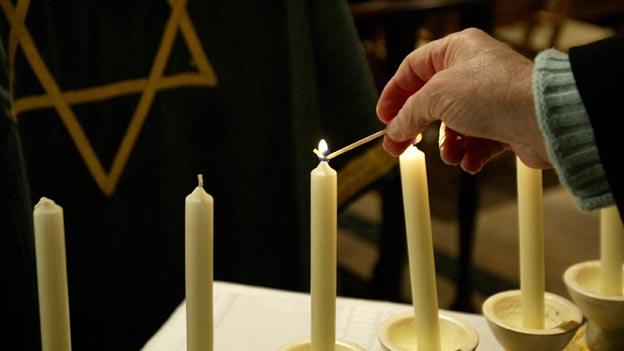Secret Mexican diary sheds light on Spanish Inquisition
- Published
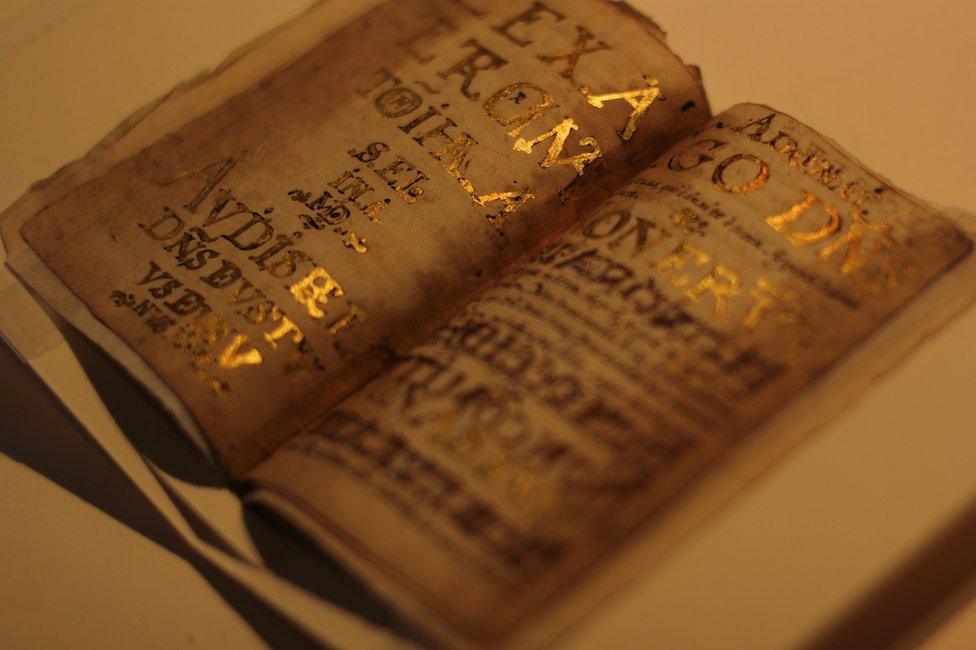
Luis de Carvajal used gold leaf from Bibles to decorate the diary
A story of torture, betrayal and persecution is captivating Mexicans almost 500 years after it happened.
The dramatic life and death of the Carvajal family in 16th-Century Mexico is in the spotlight after a decades-long search for a national treasure came to an unexpected happy ending.
Luis de Carvajal "The Young" came to Mexico - then known as New Spain - with his large, well-to-do family during the early colonisation of the Americas.
His family governed part of northern Mexico and soon made enemies, including a power-hungry viceroy keen to topple them from power.
The ambitious viceroy discovered that Luis de Carvajal was a practising Jew, a crime punishable by death in the times of the Spanish Inquisition
Older relatives had urged Luis de Carvajal to convert to Catholicism for his own safety, but he staunchly stuck to his faith.
Secret record
When he was first arrested, the authorities let him off with a warning but kept tabs on him.
Far from giving up his religion, Luis de Carvajal became a leader in Mexico's underground Jewish community.
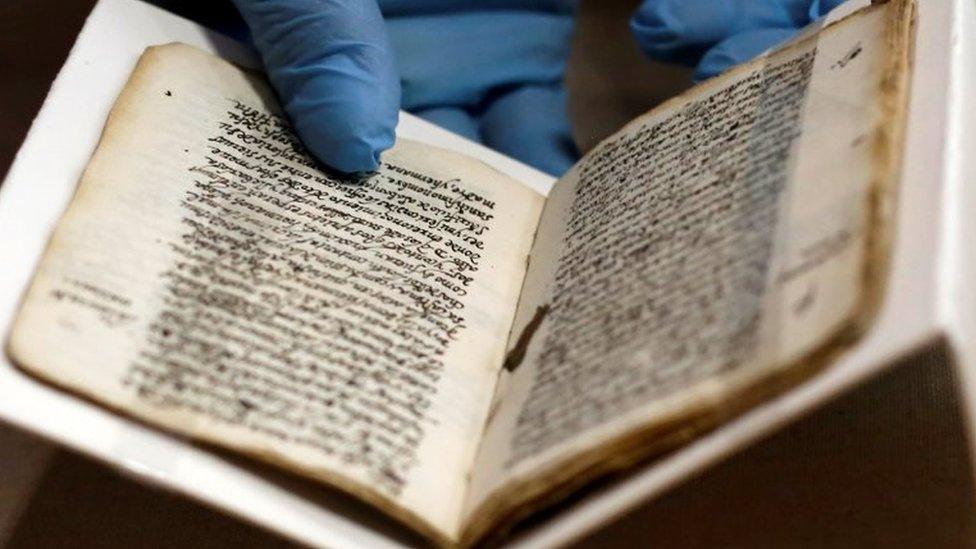
Luis de Carvajal chronicled his fall from governor to being sentenced to death in his tiny handwriting
When the inquisitors caught up with him again a few years later, he was sentenced to death. He was just 30 years old.
Before he was executed, he was tortured so badly that he revealed the names of 120 fellow Jewish people, historian Alicia Gojman explains.
His captors forced him to listen as those "heretics", which included his own mother, were tortured in the cell next to him.
"He tried to commit suicide because he couldn't cope with having told them about his family and friends, but didn't manage it," says Ms Gojman.
We know the excruciating details of Luis de Carvajal's persecution because he managed to keep secret diaries.
But these were not any old notebooks. They were painstakingly crafted, miniature manuscripts with almost microscopic handwriting in Latin and Spanish.
Some pages were intricately decorated with gold leaf he scraped from pages of a Bible.
Each of the three memoirs was no larger than a present-day iPhone, most likely so he could keep them hidden away under his hat.
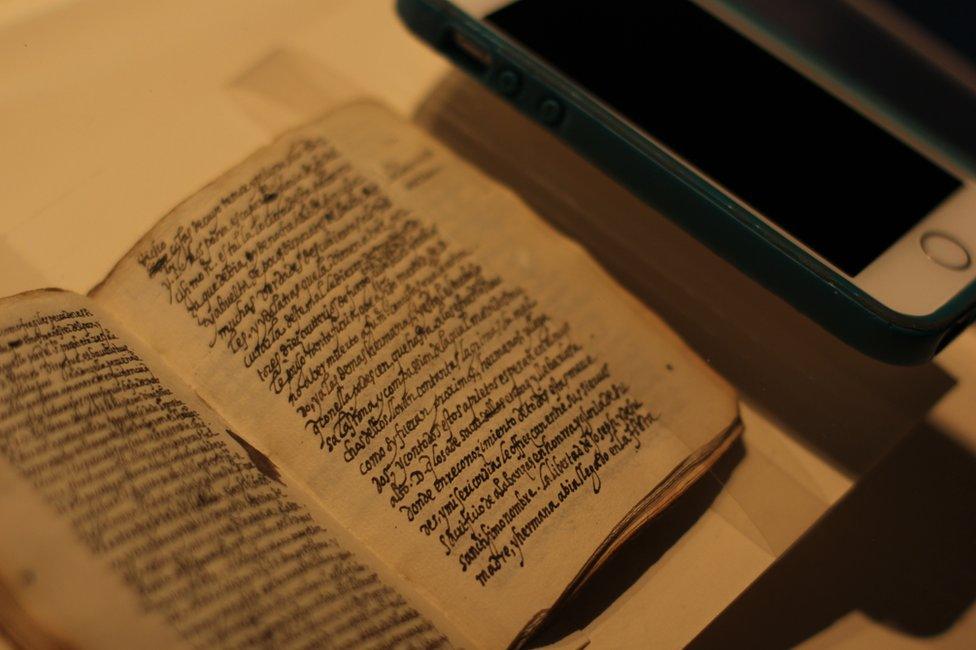
The small size of the diaries meant they could be hidden easily
Luis de Carvajal wrote about being a young Jew in the New World, about exploring his heritage and practising his beliefs despite the dangers.
But much of the memoirs focus on his final tragic days before he was burned at the stake, with vivid descriptions of him falling to his knees upon hearing his mother's tortured screams as she was pulled on the rack.
Luis de Carvajal found comfort in poetry, writing verses and prayers to reaffirm his faith in the face of so much cruelty.
Treasured artefacts
Luis de Carvajal's memoirs are treasured by Mexico's Jewish population as chronicles of keeping faith despite the ruthlessness of the Spanish Inquisition.
"Children who go to Jewish schools study the Carvajal family history," says Mauricio Lulka, executive director of the Central Committee for the Jewish Community in Mexico.
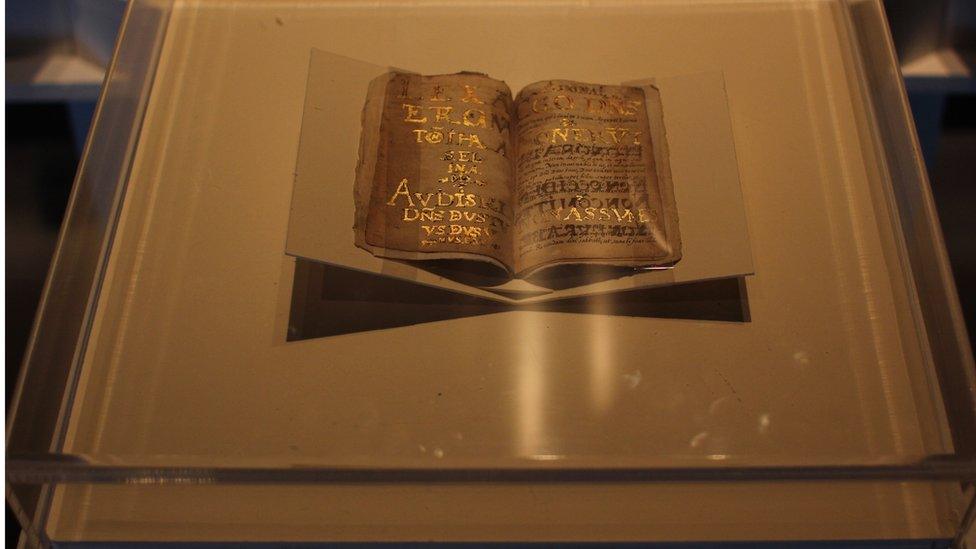
The history told in the diaries is taught in Jewish schools in Mexico today
For centuries, the delicate manuscripts were kept in Mexico's National Archives. They were treasured as being among the first artefacts documenting the arrival of Jews to the Americas and were studied by researchers from around the world.
But in 1932 they vanished, leading to suspicions among the small group of academics who had access to them that one of them may have stolen the precious diaries. After all, they were small enough to hide under a hat.
With no trace of the documents, the search was eventually suspended and the trail went cold.
More than 80 years after their disappearance, the London auction house Swann in 2016 listed "replicas" of the manuscript at an initial price of $1,500 (£1,150).
But a US collector of Judaica, Leonard Milberg, was suspicious.
Why would someone go to the trouble of recreating the minuscule handwriting of Luis de Carvajal's original to create a replica?
Intrigued, he contacted the Mexican consulate which confirmed that the originals were still missing and sent experts to check the "replicas" out.
Baltazar Brito is the director of the National Library of Anthropology and History in Mexico and one of the experts sent to assess the documents.
"When I got there, something told me they were originals, I knew it in my heart," he says.
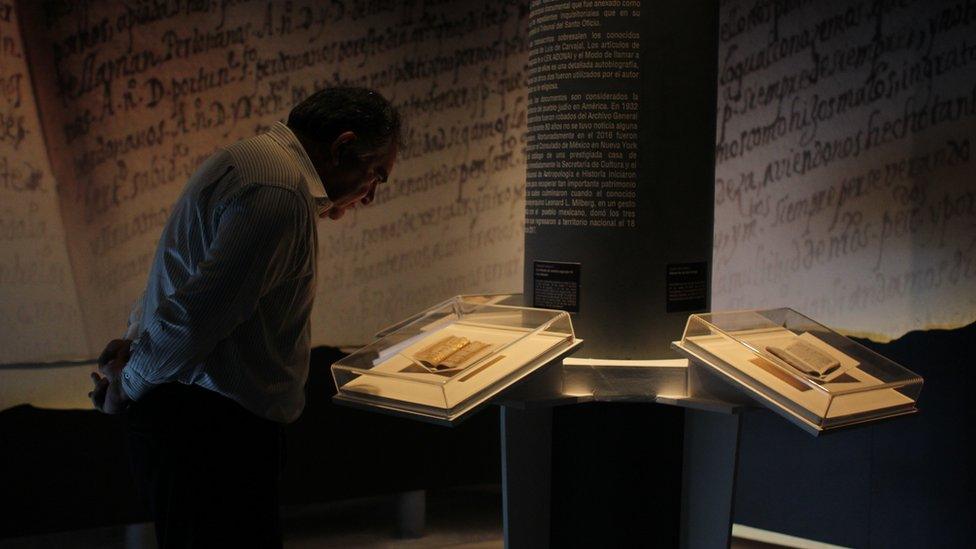
Baltazar Brito said he had a "gut feeling" the documents were originals
For Mr Brito, the documents have relevance beyond their time.
"They tell the story of religious intolerance that we shouldn't let happen again in the world," he says. "Despite that, it still happens."
Leonard Milberg felt the manuscripts belonged in Mexico, so the collector made it his mission to deal with all the international agencies involved and covered the costs of sending them back.
Their safe return was welcome news for Mexico's now thriving Jewish community of about 50,000 people, many of whom were drawn to the country by its modern-day commitment to religious freedom.
After they were briefly exhibited in Mexico City they are now safely stored in a special climate-controlled vault in the National Library of Anthropology and History in Mexico, as no one wants to risk the miniature manuscripts disappearing for another eight decades.
- Published24 December 2016
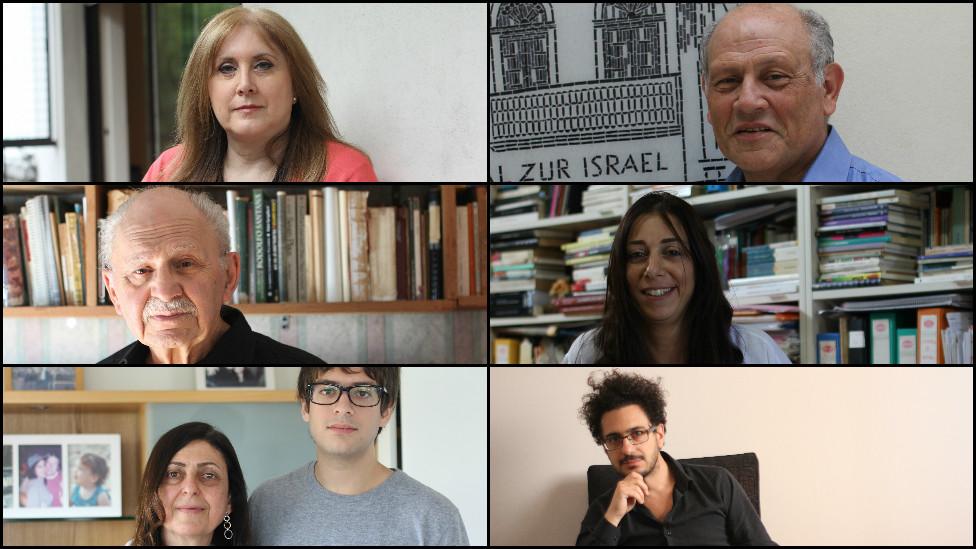
- Published6 March 2013
